Match the species in Column I with their respective feature of body organisation in Column II
Column IColumn IIP. Molluscai. PseudocoelomQ. Annelidaii. RadulaR. Nematodaiii. Radial symmetryS. Echinodermataiv. Segmentation
Choose the CORRECT combination.
P-ii, Q-i, R-iv, S-iii
P-ii, Q-iv, R-i, S-iii
P-iii, Q-iv, R-i, S-ii
P-iv, Q-iii, R-ii, S-i
To solve the problem of matching the species in Column I with their respective features of body organization in Column II, we will analyze each species and their characteristics step by step.
Step 1: Analyze P. Mollusca
- Feature: Mollusca are known for having a radula, which is a rasping organ used for feeding.
- Match: Therefore, P. Mollusca corresponds to ii. Radula.
Step 2: Analyze Q. Annelida
- Feature: Annelida are characterized by their segmented bodies. The body is distinctly marked into segments.
- Match: Thus, Q. Annelida corresponds to iv. Segmentation.
Step 3: Analyze R. Nematoda
- Feature: Nematodes (roundworms) are classified as pseudocoelomates. They have a body cavity that is not fully lined by mesoderm.
- Match: Hence, R. Nematoda corresponds to i. Pseudocoelom.
Step 4: Analyze S. Echinodermata
- Feature: Echinoderms exhibit radial symmetry, meaning their body can be divided into similar halves by multiple planes.
- Match: Therefore, S. Echinodermata corresponds to iii. Radial symmetry.
Final Matches
Now, we can summarize the matches:
- P. Mollusca → ii. Radula
- Q. Annelida → iv. Segmentation
- R. Nematoda → i. Pseudocoelom
- S. Echinodermata → iii. Radial symmetry
Correct Combination
The correct combination is:
- P → ii
- Q → iv
- R → i
- S → iii
Thus, the final answer is:
- P. Mollusca - ii. Radula
- Q. Annelida - iv. Segmentation
- R. Nematoda - i. Pseudocoelom
- S. Echinodermata - iii. Radial symmetry
- Feature: Mollusca are known for having a radula, which is a rasping organ used for feeding.
- Match: Therefore, P. Mollusca corresponds to ii. Radula.
- Feature: Annelida are characterized by their segmented bodies. The body is distinctly marked into segments.
- Match: Thus, Q. Annelida corresponds to iv. Segmentation.
- Feature: Nematodes (roundworms) are classified as pseudocoelomates. They have a body cavity that is not fully lined by mesoderm.
- Match: Hence, R. Nematoda corresponds to i. Pseudocoelom.
- Feature: Echinoderms exhibit radial symmetry, meaning their body can be divided into similar halves by multiple planes.
- Match: Therefore, S. Echinodermata corresponds to iii. Radial symmetry.
Now, we can summarize the matches:
- P. Mollusca → ii. Radula
- Q. Annelida → iv. Segmentation
- R. Nematoda → i. Pseudocoelom
- S. Echinodermata → iii. Radial symmetry
The correct combination is:
- P → ii
- Q → iv
- R → i
- S → iii
- P. Mollusca - ii. Radula
- Q. Annelida - iv. Segmentation
- R. Nematoda - i. Pseudocoelom
- S. Echinodermata - iii. Radial symmetry
Topper's Solved these Questions
- KVPY 2021BOOK - KVPY PREVIOUS YEARCHAPTER - KVPY 2021EXERCISE - Part II Biology
12 Videos
- KVPY 2021BOOK - KVPY PREVIOUS YEARCHAPTER - KVPY 2021EXERCISE - PART I BIOLOGY
19 Videos
- KVPYBOOK - KVPY PREVIOUS YEARCHAPTER - KVPYEXERCISE - PART-2 BIOLOGY
10 Videos
- MOCK TEST 1BOOK - KVPY PREVIOUS YEARCHAPTER - MOCK TEST 1EXERCISE - EXERCISE
19 Videos
Similar Questions
Match the type of cells in Column I with the organs they are part of, listed in
Column IColumn IIP. Chondroblasti. BoneQ. Osteoclastii. BrainR. Microgliaiii. CartilageS. Pneumocyteiv. Lung
Choose the CORRECT combination.
View SolutionMatch the plants in Column I with their features listed in Column II ,III & IV
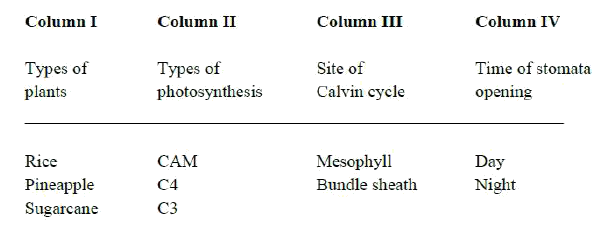
Choose the CORRECT combination .
View Solution
Knowledge Check
Match the species in Column-I with their respective feature of body organisation in Column-II.
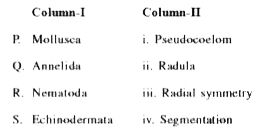
Choose the CORRECT combination.AP-ii, Q-i, R-iv, S-iiiBP-ii, Q-iv, R-i, S-iiiCP-iii, Q-iv, R-i, S-iiDP-iv, Q-iii, R-ii, S-iMatch the vitamins listed in Column - I with their respective coenzyme form in Column - II . Choose the correct combination .
 AP-v , Q - iii , R-i , S-ivBP-iii , Q - iv , R - ii , S- iCP-i , Q - ii , R - v, S - iiiDP-i , Q - iv , R - ii , S - iii
AP-v , Q - iii , R-i , S-ivBP-iii , Q - iv , R - ii , S- iCP-i , Q - ii , R - v, S - iiiDP-i , Q - iv , R - ii , S - iiiMatch the terms in Column I with their description in Column II and choose the correct option
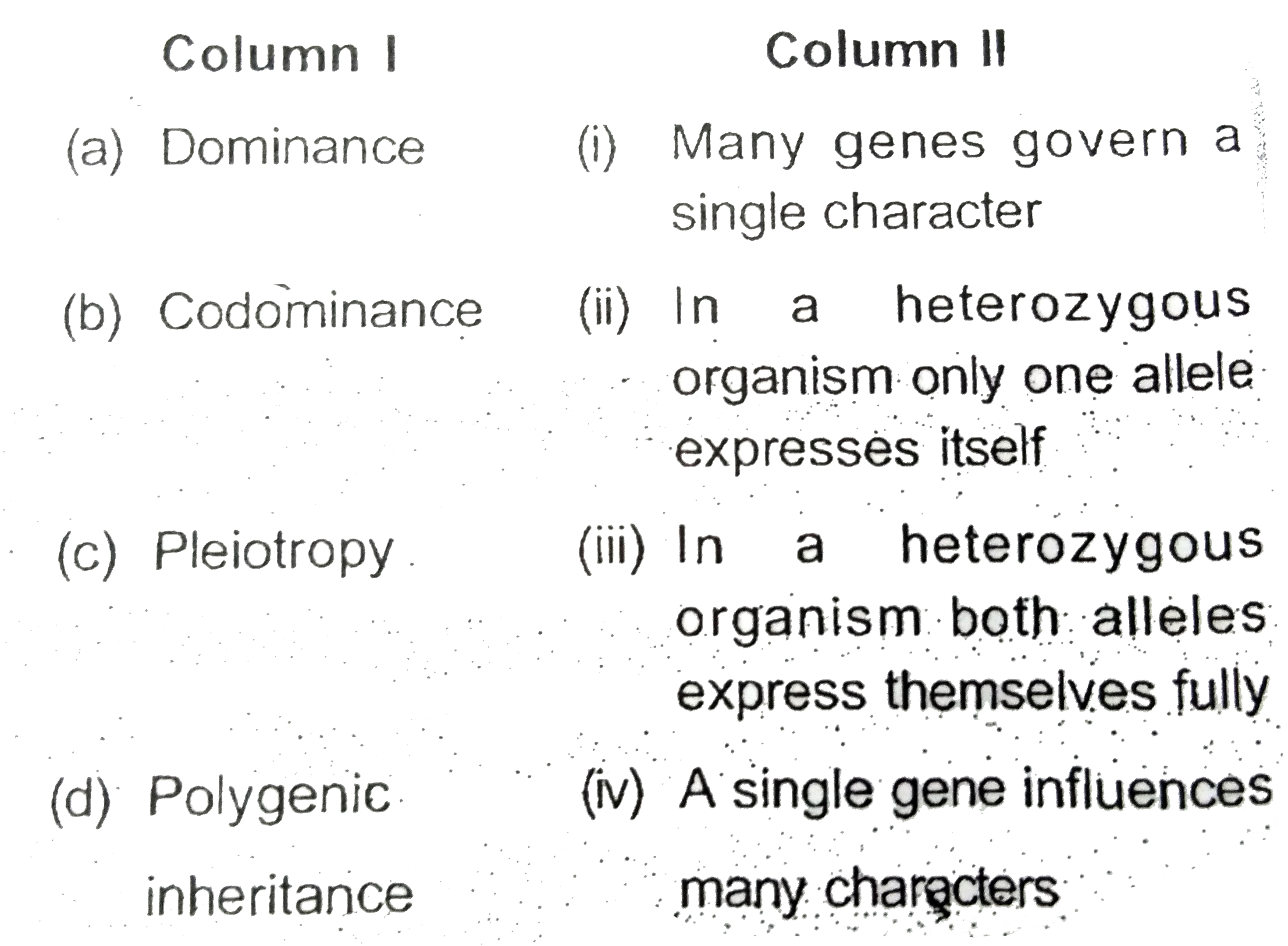 AA(ii), B(i), C(iv), D(iii)BA(ii), B(iii), C(iv), D(i)CA(iv), B(i), C(ii), D(iii)DA(iv), B(iii), C(i), D(ii)
AA(ii), B(i), C(iv), D(iii)BA(ii), B(iii), C(iv), D(i)CA(iv), B(i), C(ii), D(iii)DA(iv), B(iii), C(i), D(ii)
Match the terms in column -I with their description in column -II and choose the correct option :
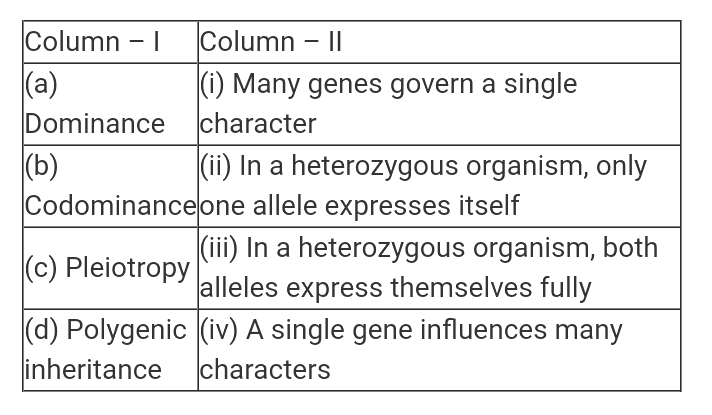
View SolutionMatch the terms in Column I with their description in Column II and choose the correct option

View Solution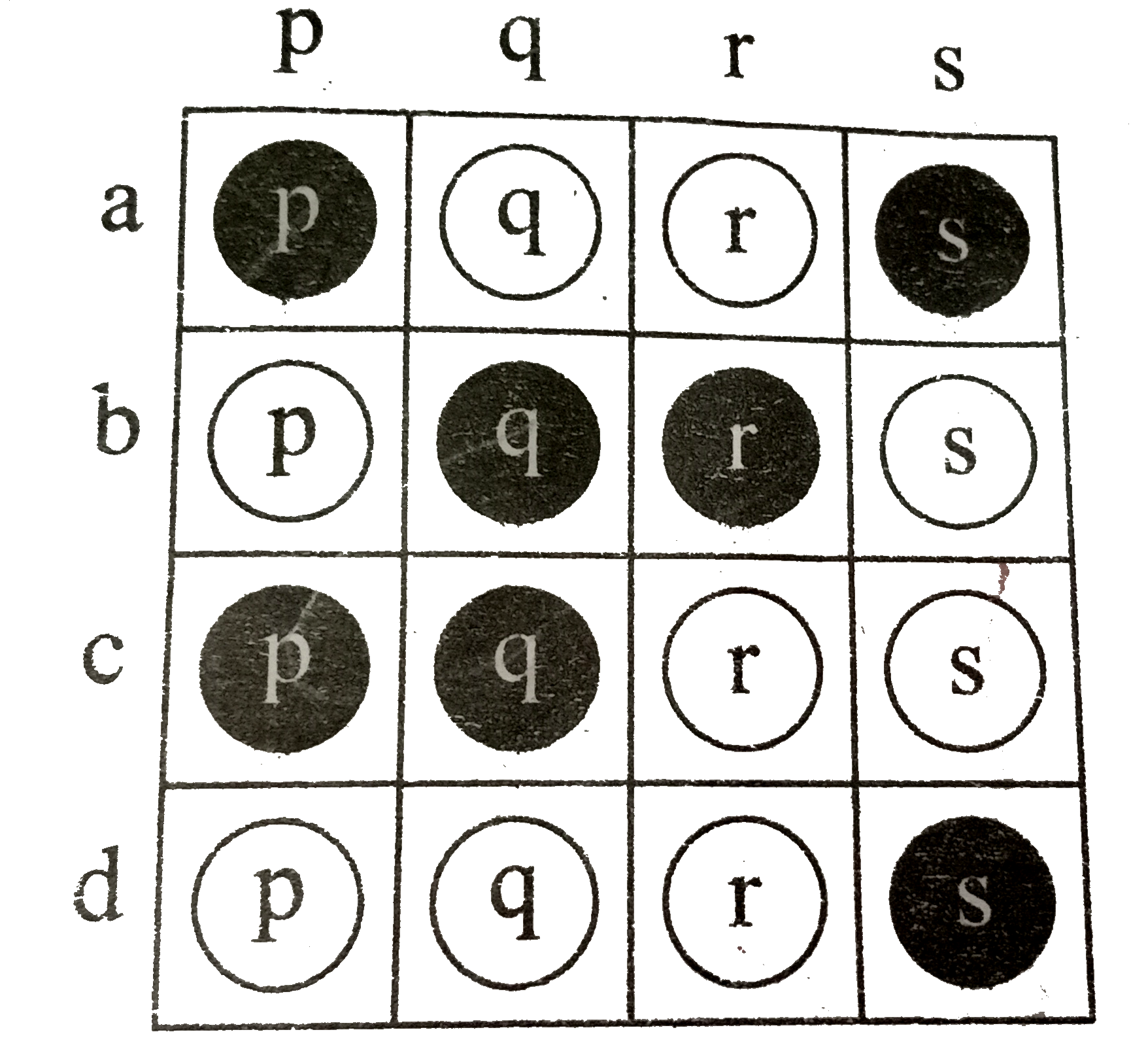
Q. Match the column-I with Column-II
 .
.
View SolutionMatch the entries in column I with entries in Column II and then pick out correct options.
Column I Column II
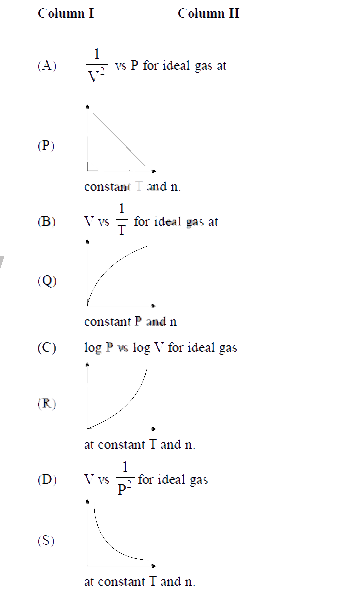
View SolutionMatch the terms in Column-I with their description in Column-II, and choose the correct option.
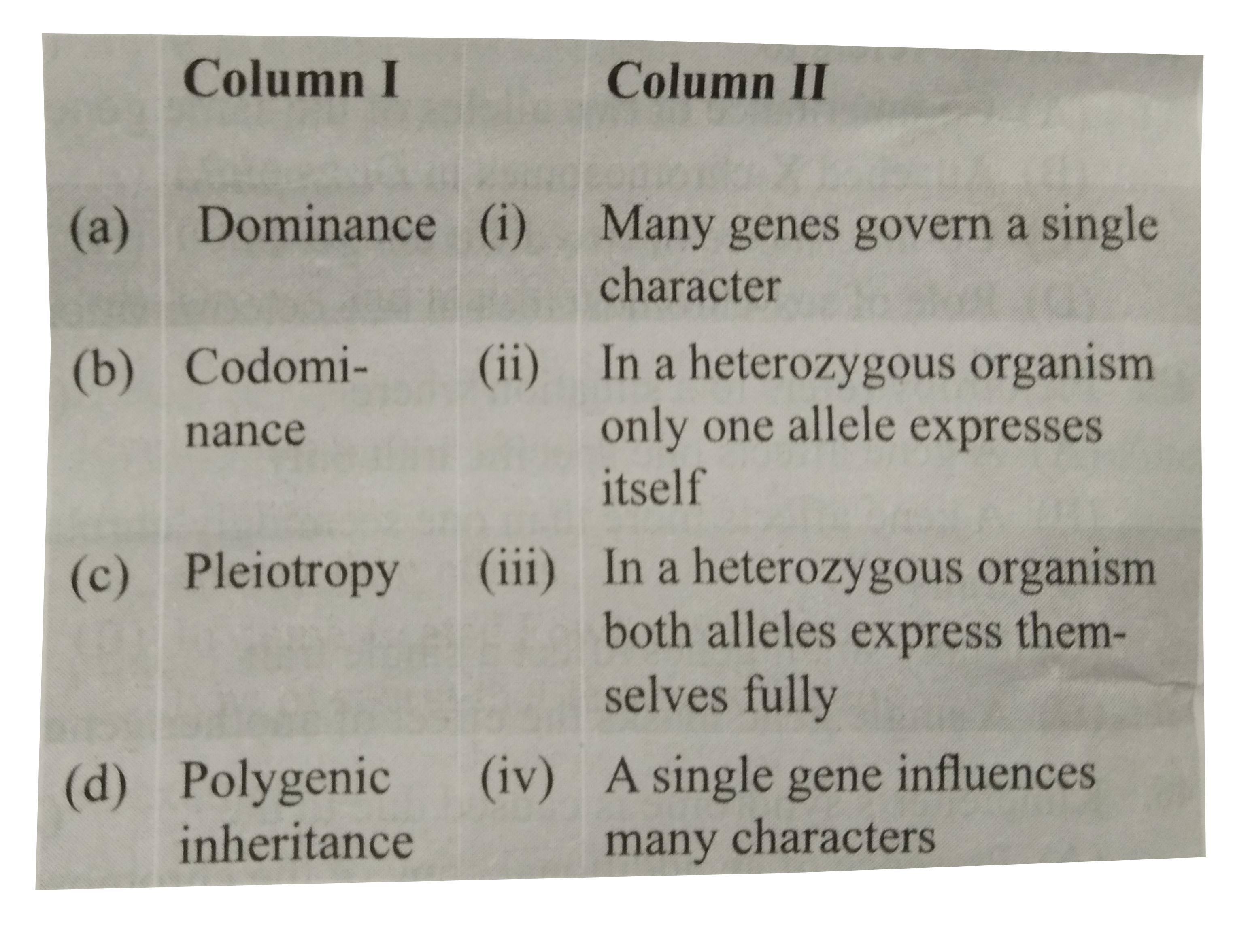
View Solution
